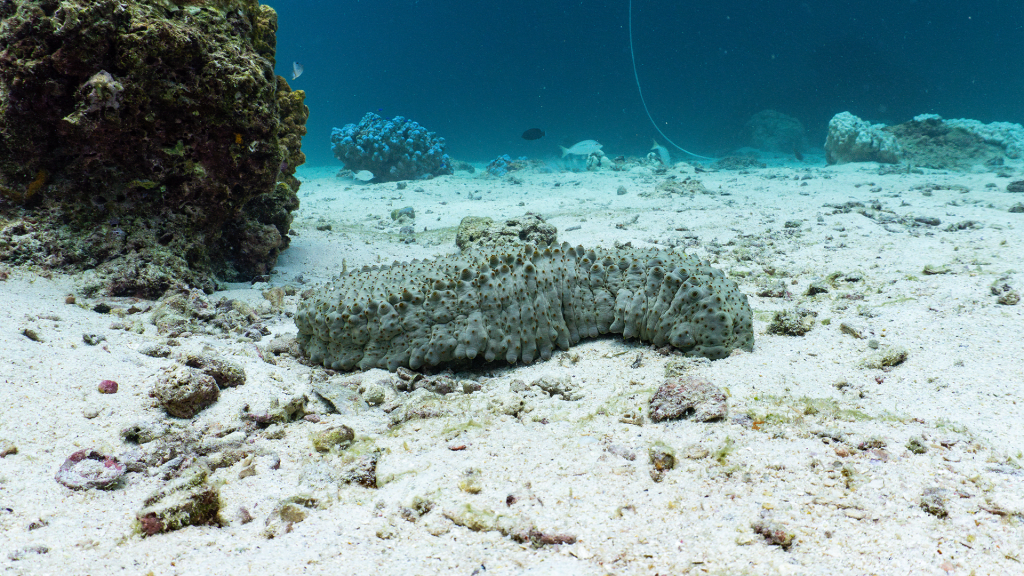Pineapple sea cucumber

The pineapple sea cucumber (Thelenota ananas), also known as the spiny sea cucumber, prickly sea cucumber, armored sea cucumber, or giant sea cucumber, is a large member of the Stichopodidae family found in the warm waters of the Indo-Pacific region. Its range extends from the Red Sea and the eastern coast of Africa to Hawaii and Polynesia.
This species is distinguished by its large size, warm coloration, and sharp star-shaped papillae covering its entire body, arranged in rows of two or three. Deep folds in its skin give it the characteristic "pineapple" appearance.
Its coloration varies from grayish-green to brown, with numerous tubercles and small conical spines.
It can grow up to 70 cm in length and weigh between 3 and 6 kg, making it one of the largest sea cucumbers.
The pineapple sea cucumber inhabits sandy and coral-covered seabeds, preferring depths of 5 to 30 meters.
Like other sea cucumbers, it plays a crucial role in maintaining the cleanliness of the seabed by processing detritus and organic particles, filtering sediments, and improving the composition of the substrate.
It can fall prey to large fish and sea stars.
When threatened, it expels Cuvierian tubules to entangle predators. It has regenerative abilities, allowing it to restore lost body parts, and can slightly alter its coloration for camouflage.
One of the largest sea cucumbers, it is consumed as food in some countries, though its populations are under threat due to overfishing. It frequently interacts with other reef species and can serve as a habitat for small fish and shrimp.
